The most commonly known degree of hydrophobia is for those who can't stand to get their heads underwater. Most in this group have a more or less okay relationship with water, as long as they don't have to dive or swim butterfly. At the other end of the spectrum, we find those who are anxious about just getting their feet in the water or even having to drink water.
Common for all the different degrees of phobia is aquaphobia, but fortunately, there is good news. It is relatively easy to get rid of hydrophobia if one simply gives it time and approaches it the right way.

Watery water shoes for adults - Perk - Dust Pink
4.74/5
Based on 167 reviews
What is aquaphobia?
Like any other phobia, aquaphobia roots itself as a fear that can trigger a strong response in individuals who suffer from it when they come into contact with water. There are several reasons for this, but fundamentally, it is about the human defense mechanism.
It is not unnatural for the human brain to perceive water as dangerous, as evolutionarily, the brain has learned that one can drown. This defense mechanism against a threat to our well-being can be tamed in many ways, and therefore, aquaphobia is experienced in various degrees.
But what is aquaphobia then? Well, it is the feeling of losing control - especially when putting the head underwater, where one knows they cannot breathe. So, if you haven't learned to be around water from a very young age or have had one or more unfortunate and threatening experiences with water, you may develop aquaphobia. One can even develop aquaphobia if their parents suffer from this phobia and, consciously and unconsciously, have been "taught" that water is dangerous.
But fear not - it is never too late to tackle your phobia, and learning to swim can take you a long way.
Small steps and room for uncertainty about aquaphobia
Regardless of the phobia one is trying to overcome, it is always important to take one's time. This also applies to aquaphobia because if one rushes to get rid of their aquaphobia, it can quickly make the phobia even worse.
Therefore, aquaphobia - and many ways to overcome it - is an exercise in trust. Trust in oneself, but also trust from one's surroundings. Almost everyone trying to overcome their aquaphobia benefits greatly from a training buddy who can swim. That person can provide a firm point to hold onto and support in the water, which is a great help, even if one can touch the bottom.
One of the biggest challenges in overcoming aquaphobia is controlling the panic that can set in as soon as one gets near the water. This panic cannot be brought under control by jumping into the deep end and trying to figure it out from there.
Therefore, there are several simple but highly effective steps one can follow to make sure they are doing everything at the right pace.

Start in a shallow swimming pool
It is important to constantly feel a form of control when dealing with aquaphobia. Even the slightest loss of control can trigger panic and result in a very negative experience from the start.
Therefore, it is best to start in a swimming pool where one can easily touch the bottom, and the water is not too cold. This way, one can walk around in the water up to the ankles, knees, or waist while still being close to an edge to grab onto or crawl onto land.
For some, it may be more tempting to start at the sea, where they can dip their toes. While this can be fine, the sea with its currents can be extremely unpredictable, so it is not recommended as a starting point for individuals with aquaphobia.
Enter the water at a calm pace
It may seem simple, but for many, it is the challenging first step - getting to the edge of the water. After reaching the water's edge, one can sit on the edge with legs in the water. It is essential to sit and feel the water until you are ready to jump in.
Once you feel comfortable, you can try jumping into the water up to your knees or hips and then sit on the edge again. This process can be repeated several times until you feel completely comfortable standing in the water
Find peace by being in the water
Once you can stand in the water without discomfort, you have already made significant progress with your aquaphobia. From here, it's about gradually getting more and more of your body into the water.
The easiest way to do this is by bending your knees, allowing your body to slowly move into the water. First to the navel, then around the chest region, and then the shoulders - and then stand up again. This movement can be repeated until you feel comfortable having water around your shoulders.
During this exercise, it's essential to convince the brain that knowing how to swim is not necessary since you can touch the bottom.
Get down and lie in the water
To be able to swim and completely overcome aquaphobia, it is essential to be able to float on the water's surface. Your practice partner becomes a crucial piece in this. The easiest way to learn this is to be pulled around in the water's surface by both hands. It is still important that both parties can touch the bottom!
While being pulled around on the water's surface, it is crucial to pay attention to your breathing - it should ideally be just as normal as when you were standing in the water. Breathing is one of the most important tools for maintaining calmness in the water.
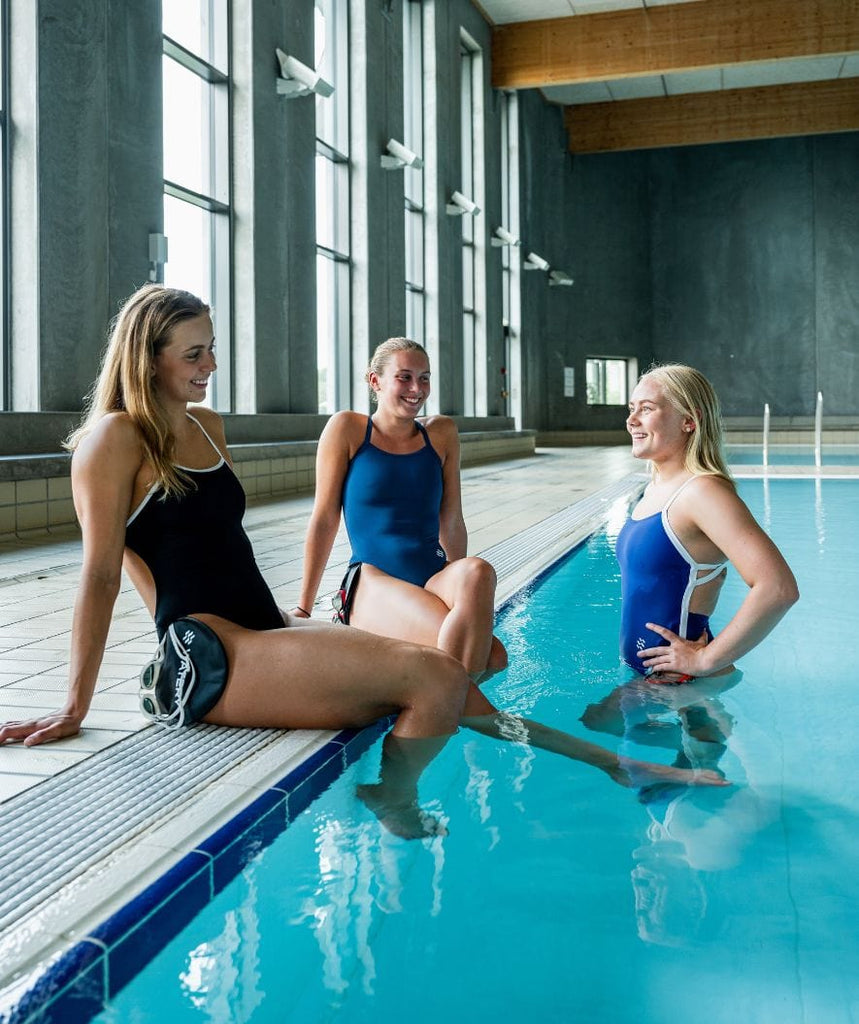
Next step - Learn to swim
For many, the battle against aquaphobia is won by just being able to stay in the water, but now you actually have the entire foundation to learn to swim and completely overcome your aquaphobia.
It is, of course, quite an upgrade, but fortunately, there is a lot of good advice for that. Among other things, how to deal with the fear of swimming or read about the best swimming tips from Watery's own Daniel.
The right equipment can make a big difference with aquaphobia
Overcoming aquaphobia involves courage and determination, but using swimming equipment can also help mitigate the fear and serve as a safety net. This applies to both young kiew and adults. Therefore, there are various types of equipment that can assist depending on where you are in the process and how much help you need.
To make it a bit more manageable, we've compiled our own little list:
-
Swim Vest - Suitable for both kids and adults, providing buoyancy to the entire upper body, making it easier to keep the head above water and avoid panic.
-
Swim Wings - Best suited for kids as their buoyancy is usually not enough to support an adult.
-
Swim Belt - A swim belt is suitable for both kids and adults, providing buoyancy to the hip region, making it easier to maintain the correct position in the water while learning to swim.
-
Noodle Aqua Worms - Ideal for those who already feel comfortable in the water but need assistance in keeping the upper body afloat. You can lie on your stomach in the water with the noodle under your arms.

Watery Combo snorkel set for kids - Cliff - Dark blue
4.74/5
Based on 34 reviews
There are many options to explore and overcome aquaphobia. Numerous swimming clubs and sports associations offer various classes focusing on aquaphobia and how to best handle it. We recommend checking the list of swimming clubs near you and explore the options they offer.
Find joy in water - even with aquaphobia
Not everyone can overcome their aquaphobia overnight, but most people reach a point where they feel comfortable in the water. And that, in itself, is a significant step.
It's worth mentioning that many individuals who feel comfortable in the water may still have aquaphobia regarding water where they can't see the bottom. This might occur, for example, in the ocean or lakes. This is as much a fear of the unknown mixed with aquaphobia, leading to an irrational fear that should still be taken seriously.
For these reasons, it's crucial to always know your limits while trying to challenge them. If you can float and swim at a basic level, you can handle most fearful situations on the water. Therefore, it's a good idea to keep the advice from DGI's swimming instructor in mind:
- Build trust in the water.
- Focus on skills.
- Gain insight into what happens in the water.
To conclude, in the words of Otto Brandenburg from the movie "Bertram": "Everyone can swim. Some just haven't learned it yet." Have a great time in the water!
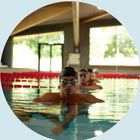

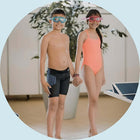
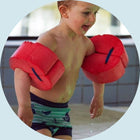
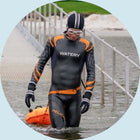

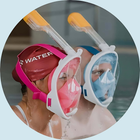



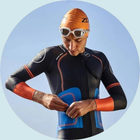

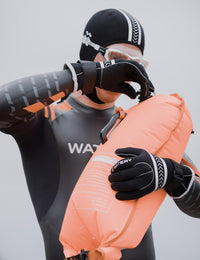
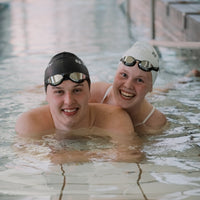
















![[FREE GIFT 1] Watery earplugs](http://watery.ie/cdn/shop/files/activeearplugs-blue-1-klartilhjemmeside_1_2_d66304d0-3b01-490e-ac51-8cff659ba150.jpg?v=1768392135&width=200)
![[FREE GIFT 2] Watery Anti-Fog Spray](http://watery.ie/cdn/shop/files/1_8fa9a41d-737d-48b9-8976-59046b5d7f6a.jpg?v=1764791464&width=200)
![[FREE GIFT 3] Watery waterproof mobile case - Storm - Black](http://watery.ie/cdn/shop/files/Designudennavn_16_58bb54e1-1352-48e2-886e-468370189acc.png?v=1768392134&width=200)
![[GRATIS GAVE 4] Watery waterproof bum bag - Talia - Blue](http://watery.ie/cdn/shop/files/WateryTaliaBumBag-Blue_1_5cc1b961-5fe7-49d7-8e3f-f894e48765a4.jpg?v=1768392135&width=200)